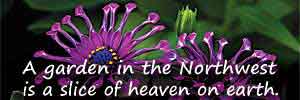Tellima grandiflora
FRINGE CUPS
syn. T. odorata, T. breviflora
Family: Saxifragaceae
Pronounced: TEH-lih-muh
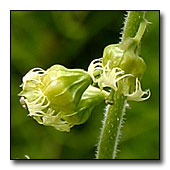
Quick Jumps
Growing Guide
Rainy Side Notes
GROWING GUIDE
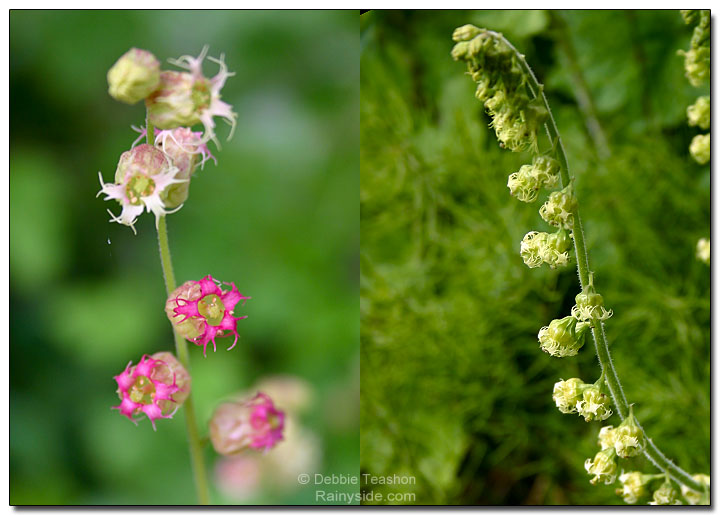
Origin:
Alaska, California, Idaho, Montana, Oregon, Washington, Alberta, and British Columbia.
Plant Group:
Perennials.
Hardiness:
Sunset zones: A3, 2-9, 14-17.
USDA zones: 4-8.
Heat zones: 8-1.
Mature size:
Height: 32 inches (80 cm).
Width: 12 inches (30 cm).
Flowering period:
April to May.
Flowering attributes:
Racemes of fragrant, greenish-white fringe cups that fade to pink, sometimes red, as the flower ages.
Leaf attributes:
Heart-shaped, scalloped, hairy, green leaves.
Growth habit:
Rosette forming perennial with creeping stems.
Light:
Partial sun to light shade; full sun if mulch is provided.
Soil:
Moist, humus rich soil, but will tolerate drought conditions once established.
Feeding:
Spring feeding with a complete organic fertilizer. Side dress with compost.
Propagation Methods:
Divide in spring.
Sow seed as soon as ripe or in spring at 68ºF (20ºC).
Pests and Diseases:
Powdery mildew may be a problem, while slugs can be a problem when plants are small.
Rainy Side Notes
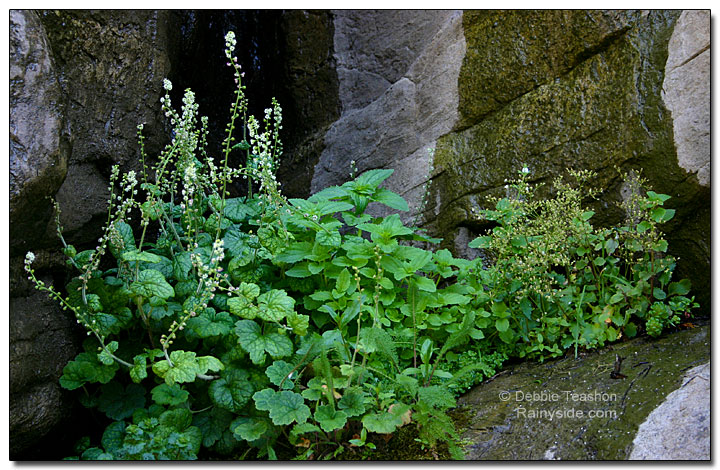
It is said that woodland elves eat fringe cups to help improve their vision; however, I couldn’t find any research that supports this theory, and nothing about its effect on human eyesight either.
All joking aside, there is one special native species in the Northwest — Tellima grandiflora — that grows in moist forests, along stream banks, and in meadows. In my neighborhood, the ditches and wild spaces come alive with masses of fringe cups in full bloom. I watch for them to begin flowering around the end of April. It's always a treat to see a bank covered in its mildly, fragrant blooms.
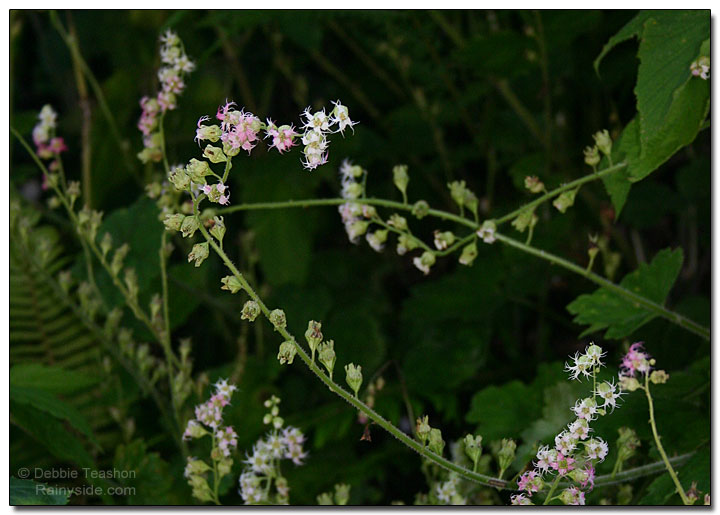
In Gardening with Native Plants of the Pacific Northwest: Second Edition, Revised and Enlarged, Art Kruckeberg warns us that tellimas have a "somewhat aggressive nature". However, in my experience, it spreads slowly, and only occasionally do seedlings pop up in other areas of the garden.
Fringecups grow in a well-drained area of my property with very little supplemental irrigation. This may be the reason fringe cups behave themselves in my garden, and might be more rampant in a moister environment. April Pettinger, the author of Native Plants in the Coastal Garden: A Guide for Gardeners in the Pacific Northwest, notes in her book that it spreads slowly.
Ethnobotany
For all ailments, the Skagit, who called the plant taxobdaloxid, used the whole plant. They pounded it, boiled it, and drank it as a tea. It also helped restore the appetite.
Another great fringe cup you can see is the cultivar Tellima 'Forest Frost'.
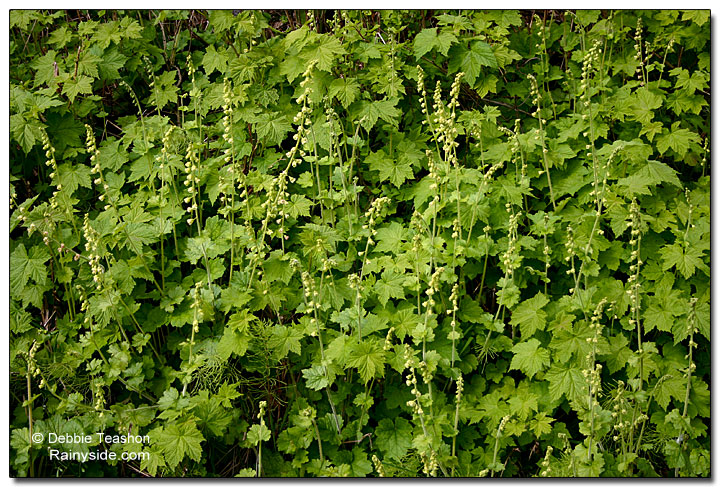
Fringe cups colonizing a drainage ditch.
A Pacific Northwest Plant of the Week (2013)
Photographed in Debbie Teashon's garden, and neighborhood in Kitsap County in Washington state. One photo of plant growing on rocks photographed somewhere on the Oregon coast.

Gardening for the Homebrewer: Grow and Process Plants for Making Beer, Wine, Gruit, Cider, Perry, and More
By co-authors Debbie Teashon (Rainy Side Gardeners) and Wendy Tweton
Copyright Notice | Home | Search | Natives

